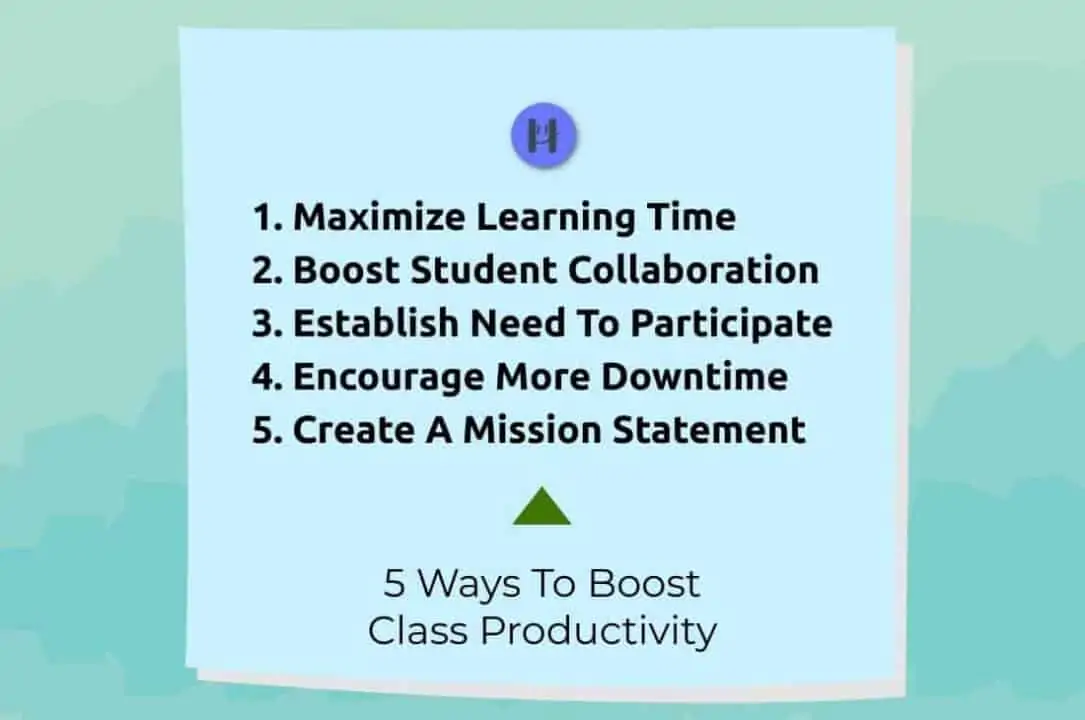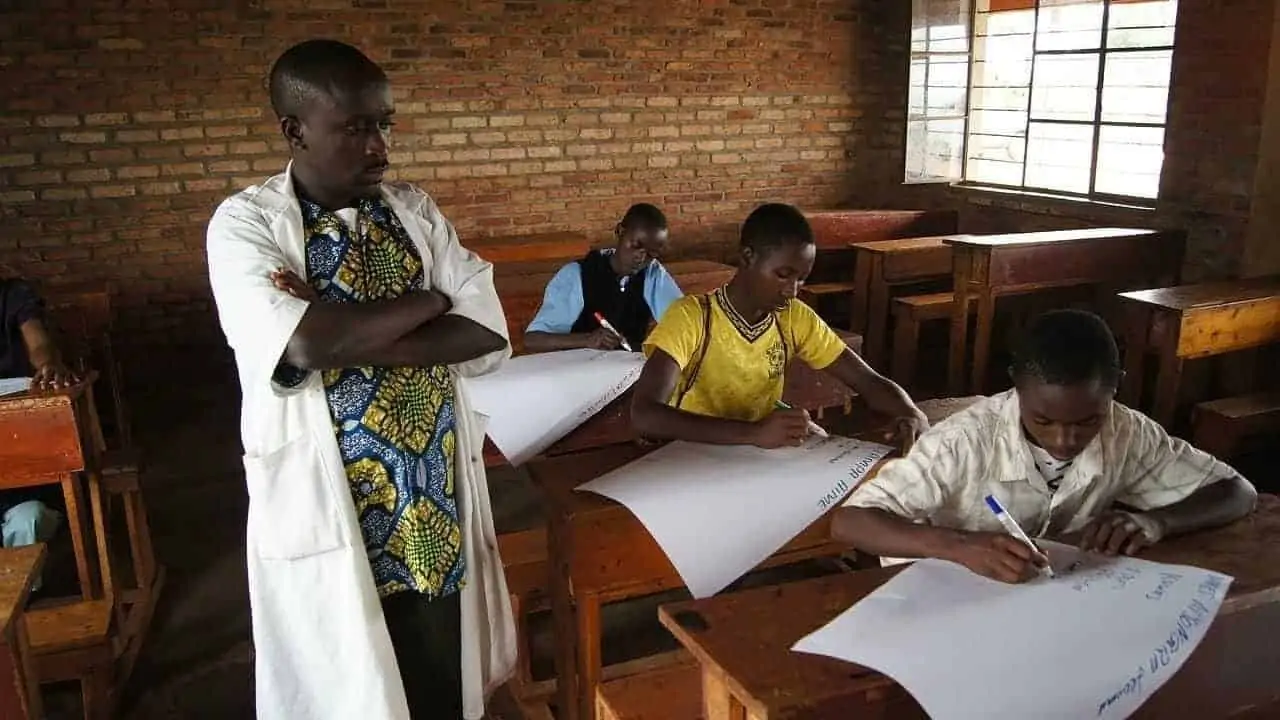Today's Sunday • 8 mins read
— By Dr. Sandip Roy.
Every year, more students enter schools, and classrooms grow more diverse. Technology has made teaching easier in some ways, yet the same challenge continues:
How to keep students engaged and learning efficiently?
Classroom productivity isn’t about rushing through lessons. It’s about creating an environment where time, attention, and energy translate into meaningful learning.
A productive classroom feels calm but active. The students here understand what’s expected, feel motivated to participate, and enjoy being part of the process.
What Classroom Productivity Really Means
Being productive in school means maximizing learning without burnout. It’s when students know what to do, how to do it, and why it matters. In productive classrooms:
- Teachers give clear instructions and goals from the start.
- Class time is used for learning, not waiting for directions.
- Students understand the rhythm of activities and transitions.
- The teacher plans lessons that keep the class lively and purposeful.
How Teachers Can Increase Classroom Productivity in Schools
Classroom productivity depends as much on the teacher’s planning as on the students’ engagement. When both align, learning happens more naturally and efficiently.
These five tips can help raise your classroom productivity:
1. Maximize Learning Time
Lost minutes between lessons often reduce productivity. Every transition, whether handing out papers or setting up group work, can break concentration.
Plan lessons in advance and prepare materials a few days ahead. Organize the classroom before students arrive so time isn’t wasted finding what’s needed. Write concise instructions that everyone can follow easily.
Set clear routines. When students know how each class begins and ends, they settle faster. Use timers or visual cues to stay on track. Avoid unrelated discussions that drift away from the subject.
Avoid doing administrative tasks during class time unless students are busy with group work.
You can also rely on digital tools like Google Classroom to streamline communication and track progress.
A few lost minutes every period can add up to several hours of missed learning each week.
2. Encourage Teamwork and Peer Learning
Group activities help quieter students express themselves. Small teams create independence, cooperation, and a sense of belonging.
Research in Edutopia (2022) found that students who worked collaboratively retained more information and showed greater motivation.
Here’s how to make group work more effective:
- Create challenging tasks. Avoid too simple projects. Also, don’t keep them so complex that only top students handle them. The goal is teamwork, not delegation. Give tasks that slightly stretch them out of their comfort zones.
- Keep groups small. Around five members in a group work well. Keeping kids busy in smaller groups ensures everyone contributes. Assign roles such as note-taker, timekeeper, or presenter.
- Promote respectful debate. Encourage students to discuss without disrespect. It builds confidence and empathy. Set rules on debate structure: to communicate, disagree, and reach a common conclusion or decision. Make sure every student gets a chance to speak.
- Provide timely guidance. It’s your role as an educator to stay ready to help when needed. But don’t solve everything for them. Learning happens through effort and feedback.
Teamwork teaches students to listen, negotiate, and take responsibility. Those are the skills that matter far beyond the classroom.
3. Make Participation A Class Habit
Participation is one of the strongest predictors of learning. Still, not all students find it easy. Some fear speaking up; others worry about making mistakes.
Create a classroom layout that invites eye contact and interaction. Circles or small clusters work better than rows. Let students know early that participation counts toward their overall performance.
Use strategies like “Think-Pair-Share.” In this, students first reflect alone, then discuss in pairs before sharing with the class. Rotate who answers so that every student, not just the confident few, has a voice.
Encourage those who rarely speak. The goal is to make participation a normal part of learning, not a stressful one.
Make sure that you value everyone’s responses. Remember names, so you can engage with the students at a personal level.
4. Build In Short, Active Breaks
Attention spans are shorter today than ever. A 2016 study found that elementary students focused better on ten-minute lessons than half-hour ones.
Newer findings continue to confirm the value of short breaks. A 2023 study, Rest Breaks Aid Directed Attention and Learning (Ginns, 2023), reported that short rest breaks helped students maintain focus and improved learning outcomes.
A 2025 publication in Frontiers in Psychology also supports the benefit of micro-breaks—brief pauses for stretching, movement, or breathing—to improve concentration and mood in classroom settings.
Breaks don’t mean downtime with no purpose. Try:
- Two-minute brain games
- Music or short mindfulness exercises
- Quick breathing or stretching sessions
Studies also show that short breaks help the brain consolidate memories and reduce stress. A few minutes of rest often recharge students better than pushing through fatigue.
5. Create A Classroom Mission Statement
A classroom mission gives everyone a common purpose. It reminds students they are part of something bigger than individual grades.
Develop this mission with your students. Start by creating a motto—something simple like “Learn with curiosity, listen with respect.” Then craft a statement together about what kind of class you want to be.
Ask students what they want to achieve this year—higher grades, better teamwork, or more kindness. Write it down, design an emblem or poster, and place it where everyone can see it.
When students help define the class mission, they feel responsible for upholding it.
6. Support Teacher Productivity and Well-Being
A teacher’s energy shapes the classroom more than any other factor. Burnout and stress reduce patience, creativity, and enthusiasm.
Teachers can protect their productivity by:
- Using AI or digital tools for grading and attendance tracking
- Planning lessons collaboratively with peers
- Keeping boundaries between work and rest
- Reflecting weekly on what worked and what didn’t
Professional satisfaction feeds classroom productivity. A calm, focused teacher models the same balance students need to learn well.

How To Measure Classroom Productivity
Measuring educational productivity goes beyond test scores. It’s about how engaged students are, how time is managed, and how much progress is made over time.
Here are practical ways to gauge classroom productivity:
- Time management: Review how efficiently class hours are used.
- Improvement over time: Compare student growth throughout the year.
- Engagement levels: Observe participation in class discussions and activities.
- Student performance: Track progress through tests, projects, and presentations.
- Resource use: See how well materials, technology, and teacher expertise are applied.
Teachers may also monitor interest through these signs:
- If students are listening with attention.
- When they take part in class activities.
- When they engage with other students.
- If students are curious and ask questions.
- If they are naturally happy sitting through the class.
- If they create healthy competition within the classroom.
- If they share their performance with friends and parents.
- If they are focused on the assignments, activities, lessons, tests.
For a broader perspective on effort, see Sherri Fisher: ‘Trying harder is not sufficient by itself.’

Why Productivity Matters for Students’ Mental Health
High classroom productivity isn’t just about academic success. It shapes emotional well-being.
When learning feels structured and achievable, students develop confidence. They’re less likely to experience anxiety or low self-esteem.
Productive classrooms also support social connection, which protects mental health and improves resilience.
Parents and teachers often aim for good grades, but what students need most is a sense of progress and belonging. A productive learning space provides both.
Common Causes of Low Productivity in Schools
Even skilled teachers can face obstacles that limit productivity. Some common reasons include:
- Bully, abuse, emotional distress
- Medical or psychiatric conditions
- Excessive administrative work for teachers
- Lack of teaching materials or low access to technology
- Poor classroom environment or socio-cultural barriers
- Below-average intelligence, resistant attitude to learning
- Learning disabilities or ADHD (attention-deficit/hyperactivity disorder)
Recognizing these challenges allows schools to provide timely interventions, like extra support, counseling, or resources that prevent students from falling behind.
Do Extracurricular Activities Build School Productivity?
Extracurriculars strengthen productivity by giving students purpose and breaks outside academics. They build teamwork, leadership, and problem-solving skills. They learn the value of taking breaks.
When students explore new interests, they return to class more motivated. Balanced school programs that combine academics with sports, arts, or social service tend to have happier, higher-performing students.
Final Words
Productivity in classrooms is about learning better, not getting more done.
Teachers who plan ahead, balance their workload, and encourage collaboration make a lasting difference in how students think and feel about learning.
A productive classroom builds competence, confidence, and curiosity. It helps students grow into adults who value learning as a lifelong habit—and that’s the real measure of educational success.
• • •
Leanne Brooks wrote an earlier, shorter version of this article. Expanded, reviewed, and revised by Dr. Sandip Roy, medical doctor, psychology writer, and happiness researcher.
√ Also Read: 12+ Decision-Making Biases That Can Ruin Your Success
√ If you found this useful, please spread the word.
» You deserve happiness! Choosing therapy could be your best decision.
...
• Disclosure: Buying via our links earns us a small commission.